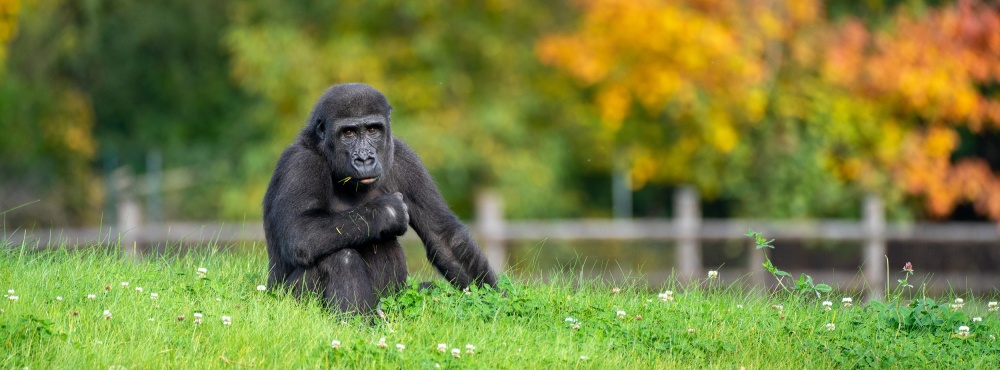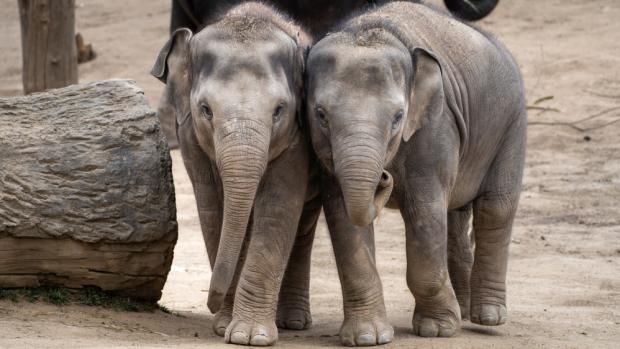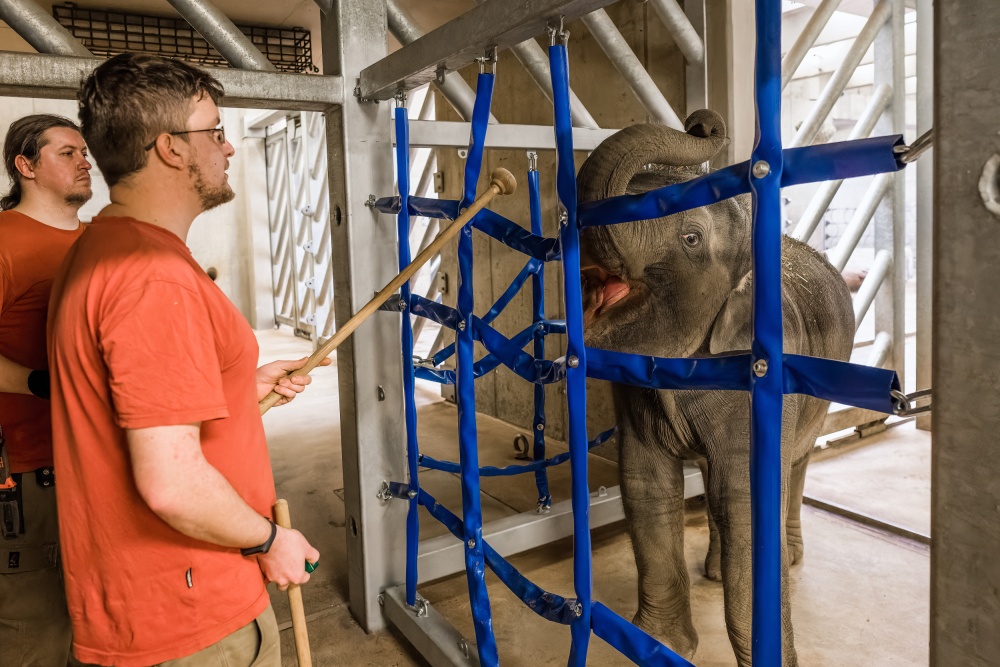Prague Zoo´s baby elephants undergo veterinary training

Elephant Valley’s two youngest inhabitants, two-year-old Lakuna and Amalee, who is six weeks her junior, are already undergoing regular veterinary training in what is known as protected contact. The baby elephants have also increased their birth weight several times over, their tusks are slowly coming through, and their milk teeth are dropping out
 Lakuna the female elephant weighs 842 kilograms, Amalee weighs 46 kilograms less. However, an adult female Asian elephant can weigh up to 3.5 tonnes. Photo Oliver Le Que, Prague Zoo
Lakuna the female elephant weighs 842 kilograms, Amalee weighs 46 kilograms less. However, an adult female Asian elephant can weigh up to 3.5 tonnes. Photo Oliver Le Que, Prague Zoo
“It’s important for elephants to get veterinary training in case of health complications, as it means routine procedures do not unnecessarily stress the animals. That’s why every day we practice taking blood from both elephants’ ears, give them hoof pedicures, check their mouth and rinse their trunk, which is important if we need to do tests on samples from the nasal cavity,” said senior elephant keeper Martin Kristen.
The breeders are now gradually shifting from direct contact to protected contact for both calves and their mothers, Tamara and Janita. This is a safer and more modern way of handling these animals, which can weigh up to several tonnes. A protective screen separates the keeper and the elephant. The keepers have had a special flexible contact wall made. The sheathed chains can be extended as the elephants grow. Another advantage is that it is open and fully connected to the female elephants’ stall. This means the mother and calves can be trained at the same time and the female can check on her offspring at any time.
“Using protected contact, the elephant has greater choice as to whether it will cooperate with us, if it doesn’t feel like exercising, it simply walks away from the contact wall. We motivate the animals during training with rewards of fruit, especially bananas, which are their favourite. Examples of what we use to help the elephant understand the commands can be a clicker, where the audible click alerts the animal to the correct command, or a target, which uses touch to indicate what the elephant should do," explained Kristen.

Both calves have grown a lot since their birth. Just after birth, Lakuna measured roughly 88 centimetres and Amalee was 2 centimetres taller. Now Lakuna is already 155 centimetres at the withers and her current height has exceeded Amalee’s by one full centimetre. Both animals have also seen a significant increase in weight. Lakuna weighs exactly 842 kilograms, whilst weighing just 92 kilograms at birth. Amalee, however, was born at 124 kilograms and now weighs 796 kilograms. So, over the last year, Lakuna has surpassed Amalee in both height and weight.
Thanks to regular checks, the keepers have also found out that Amalee’s tusks are already erupting. As for Lacuna, they can still only be felt by touching her gums, but her first molar has already been replaced. Elephants’ teeth change in a very unusual way, more commonly seen in sharks or crocodiles. Behind the functional molar there is already another one that is ready. This slowly moves into the jaw from behind and pushes out the one in front. For the first few sets of teeth, the tooth falls out in its entirety; for the last two, the tooth is worn down by use and falls out in pieces.
“Elephants change their molars throughout their lives, about six times in total. The new teeth are always slightly larger than the previous ones. The last ones erupt when they’re around 50 years old, are as big as bricks and can weigh up to four kilograms,” added Kristen.
Visitors will get the best opportunity to see the elephant herd, including the youngest arrivals, between 12:30 and 14:30, when they go into the outdoor enclosure. They are even starting to visit the grassy enclosure when the weather is conducive.
ZOOPRAHA.CZ
Contacts
- The Prague zoological garden
U Trojskeho zamku 120/3
171 00 Praha 7
Phone.: (+420) 296 112 230 (public relations department)
e-mail: zoopraha@zoopraha.cz
Others








